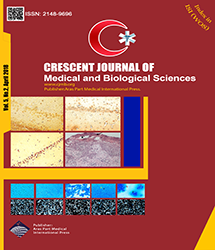
| Original Article | |
| The Study of Vitamin D Status in Population Referred to Clinical Laboratories in Ilam, West of Iran | |
| Masoumeh Shohani1, Akram Mansouri2, Milad Azami3, Ali Soleymani4, Gholamreza Badfar5 | |
| 1Department of Nursing, Faculty of Allied Medical Sciences, Ilam University of Medical Sciences, Ilam, Iran 2School of Nursing and Midwifery, Ahvaz Jundishapour University of Medical Sciences, Ahvaz, Iran 3Student Research Committee, Ilam University of Medical Sciences, Ilam, Iran 4Faculty of Medicine, Dezful University of Medical Sciences, Dezful, Iran 5Department of Pediatrics, Behbahan Faculty of Medical Sciences, Behbahan, Iran |
|
|
CJMB 2018; 5: 115-118 Viewed : 6900 times Downloaded : 14062 times. Keywords : Prevalence, Deficiency, Vitamin D, Iran |
|
| Full Text(PDF) | Related Articles | |
| Abstract | |
Objectives: Among different micronutrient deficiencies, vitamin D deficiency (VDD) is nowadays considered pandemic. Therefore, the present study aims to investigate vitamin D status in the population referred to the laboratories of Ilam from 2014 to 2015. Materials and Methods: This cross-sectional population-based survey was conducted among the patients who referred to five laboratories of Ilam from July 2014 to July 2015. The samples were selected by a random procedure. 25-hydroxyvitamin D [25OHD] levels were determined by enzyme-linked immunosorbent assay (ELISA) method. Cut-off points for serum levels of 25OHD were defined as normal (>30 ng/mL), vitamin D insufficiency (VDI) (10-30 ng/mL) and VDD (<10 ng/mL). Data were analyzed using SPSS version 17.0 by descriptive and analytical statistics (chi-square test). Results: In total, 7725 subjects (5273 females and 2452 males) with a mean age of 34.96±18.10 years were investigated. The prevalence of VDD/VDI combined was estimated to be 65.8%. Its prevalence was 67.3% among females, and 62.8% among the males. The prevalence of VDD and VDI was 12.1% and 53.7%, respectively. The highest prevalence of VDD combined with VDI was estimated for ages between 18 and 60 years (68.3%). The mean 25OHD concentration was 27.02±18.04 ng/mL and this concentration for male and female was 28.39±16.48 and 26.41±18.60, respectively. The relationship between VDD and age and sex was statistically significant (P < 0.001). Conclusions: The results suggested that VDD and VDI are very prevalent in this region. Accordingly, it is necessary to take certain intervention measures such as medication and vitamin D-enriched nutrition to decrease VDD and VDI. |
Cite By, Google Scholar
Google Scholar
PubMed
Online Submission System
 CJMB ENDNOTE ® Style
CJMB ENDNOTE ® Style
 Tutorials
Tutorials
 Publication Charge
Medical and Biological Research Center
About Journal
Publication Charge
Medical and Biological Research Center
About Journal
Aras Part Medical International Press Editor-in-Chief
Arash Khaki
Deputy Editor
Zafer Akan


















